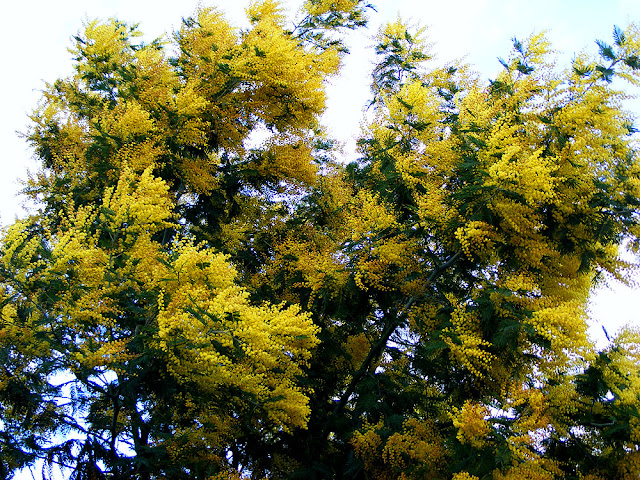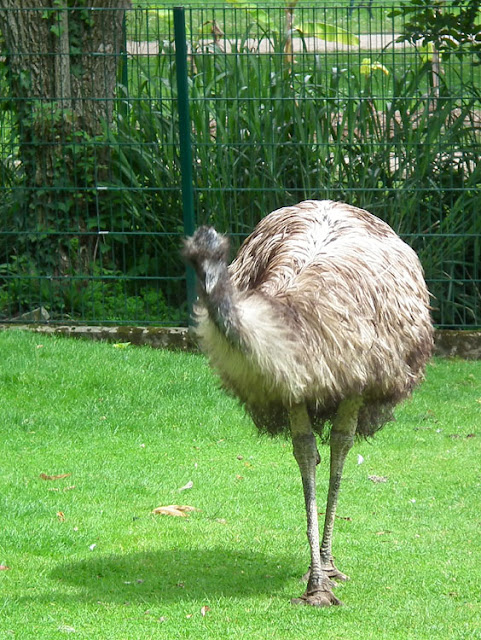Wattle Acacia sp (known as mimosa in France) flowering in a village garden in France.
The Empress Josephine, wife of Napoleon Bonaparte, was a keen and competitive gardener. She had access to all the newly discovered exotic plants and animals being brought back to Europe from Australia by Nicolas Baudin and South America by Alexander von Humboldt. Her only rivals were the botanists and zoologists at the Jardins des Plantes, the French national botanical and zoological gardens.
Emu in the botanic gardens in Tours.
After she purchased Malmaison in 1799 she was able to fully indulge her love of plant collecting, introducing acacia (wattle, known as mimosa in France), melaleuca (bottlebrush), eucalyptus (gum trees) and bracteantha (everlasting daisy). Not only were Australian plants introduced at Malmaison, but the gardeners pioneered their propagation and they were then distributed throughout France to suitable locations.
Eastern Grey Kangaroos crossing a paddock in south-east Queensland, Australia.
As well as the plants, Josephine acquired animals, including the first kangaroo in France, emus and black swans. The kangaroo did not thrive but the black swans did, and their descendants can now be found in exotic water bird collections on grand estates all over France.
Eucalyptus blossom.
Paperbark tree Melaleuca sp, North Head, Sydney, Australia.
Black Swan at the Chateau de Cheverny.
************************************************
For details of our private guided tours of chateaux, gardens, wineries, markets and more please visit the Loire Valley Time Travel website. We would be delighted to design a tour for you.
We are also on Instagram, so check us out to see a regularly updated selection of our very best photos.
We are also on Instagram, so check us out to see a regularly updated selection of our very best photos.







3 comments:
Susan, your "everlasting daisy" made me think of what we call immortelle in French, and then I got really confused. I found three different plants, all in the daisy family, i.e. Helipterum roseum,
Xerochrysum bracteatum, (which is the Australian Bracteantha) and Helichrysum italicum (which is our immortelle). Now, could there be some confusion in France between the Italian and Australian everlasting daisy?
More or less between Cannes and Grasse, in the Alpes-Maritimes department, there is a hilly range, le massif du Tanneron, covered with cultivated and wild mimosas. It is a delight to take walks there in February.
I imagine people could confuse H. ilalicum and X. bracteatum -- personally I don't know how, but people confuse the most extraordinarily different species. Anyway, in my opinion they look quite different. H. italicum is what I would call Curry Plant, btw. There are lots of species of Australian everlastings aka straw or paper daisies. H. roseum is South African and looks very similar to some of the well known Australian species.
The mimosa cultivated between Grasse and Cannes is used in the perfume industry, and has naturalised. It is not native to France.
Post a Comment